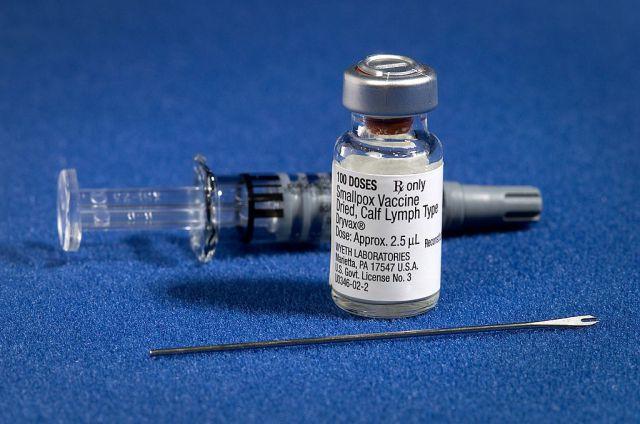On the Horizon: Monkeypox
Posted on January 4, 2017 by Benjamin Thompson
On 8 May 1980, after a global vaccination campaign, the WHO declared that smallpox had been eradicated. Wiping out this viral disease, which has claimed the lives of hundreds of millions of people throughout history, should be considered one of humanity’s greatest achievements. In fact, to date, smallpox is one of only two diseases that we have managed to completely eliminate.

However, this incredible feat has come with some unexpected negative consequences. Just as, centuries before, cowpox virus protected people from getting smallpox, scientists today are discovering that smallpox vaccination may have been preventing the emergence of another related disease: monkeypox. Without the smallpox vaccine to protect people, monkeypox cases are on the rise.
Monkeypox is a member of the genus Orthopoxvirus, and causes similar symptoms to its famous cousin, although thankfully much less severe. Although estimates vary, fatality rates are believed to be less that 10% (compared to around 30% for smallpox). Human-to-human transmission can occur, but is rare.
While small outbreaks of monkeypox occur fairly regularly – an outbreak is currently going on in the Central African Republic – there is still a lot that is unknown about this virus. Even its name is a misnomer, given because the virus was first identified in monkeys housed in a Danish research facility. In truth, it seems that rodents, like squirrels and rats, are the virus’s natural hosts, although work is still to be done to make sure.
Anne Rimoin is an Associate Professor at UCLA Fielding School of Public Health, who has been running a research programme in the Democratic Republic of Congo (DRC) since 2002. Between 2005–2010, she led on a disease surveillance project in central DRC, and used data from this work to compare the number of cases of monkeypox from 1981–1986 with those from 2006–2007. Results from this work found that incidences of the disease have risen from less than one case per 10,000 people to just over 14 per 10,000 .
While these numbers may appear small in the first instance, why is it that case numbers jumped almost fifteen-fold in such a short space of time? It seems likely that multiple causes are involved. DRC has been devastated by periods of prolonged civil war, leading to the collapse of local healthcare systems, and causing people to travel deeper into the jungle to source animals to eat for protein, which may represent an increased risk of contracting the virus.
Demographics also play a part. The life expectancy in DRC is low (58 for males, 62 for females), and the median age for the country is around 18 (compared to 40.5 in the UK), meaning that a huge number of people were born after smallpox vaccination ceased.
That there is a vaccine available to prevent monkeypox – even if it is for another disease and is only believed to be around 85% effective – sets the virus apart from other emerging infections. However, rolling out another mass vaccination campaign for a relatively obscure disease requires numerous hurdles to be overcome.
Anne explains: “Unfortunately the places where monkeypox occurs already struggle to maintain adequate levels of inoculation for standard vaccine preventable diseases – measles, tetanus and polio, for example.”
There are other problems too. To produce short runs of a vaccine would make it extremely expensive, and Anne suggests that inoculating a vaccine-naïve population would likely cause a lot of side effects.
“At the moment monkeypox is a disease that burns out after a certain number of cases, ” she explains. “Human-to-human transmission is rare, but it happens. However, it doesn’t happen enough to move finite public health dollars spent fighting diseases that kill thousands of children every day to something that might kill a couple of hundred a year.”
So if immunisation is an unlikely scenario, what can be done to prevent the disease? Anne is working in DRC to educate people about potential reservoir species, and helping local health workers to recognise the disease so they can protect themselves and isolate patients to prevent spread.
She says that there’s still work to be done: “I’ve worked a lot in the field and people often don’t use the standard precautions – often because they don’t have [access to] gloves or masks.
“Cases of this disease occur way out in the middle of nowhere – they’re not occurring in Kinshasa – so improving surveillance to get people out there who can handle the situation and educate the population is really the best you can do at this point.”
While monkeypox remains a relatively obscure disease, occurring mostly in Central and Western Africa, other outbreaks of note have occurred. In 2003, 72 cases of the disease were identified in six mid-western American states. This outbreak represented the first time the disease had been reported outside of Africa, and was traced back to pet prairie dogs that had been housed in a distributor’s facility, kept alongside infected rodent species imported from Ghana.
While no direct human-to-human cases were detected, this outbreak showed that rodents other than those found in Africa could act as vectors for the disease. As a result, the US Centers for Disease Control and Prevention (CDC) have banned the importation of African rodents.
As other articles in our On the Horizon series have shown, the reasons why diseases emerge is hugely complicated, with seemingly disparate factors coming together at the same time. Some can be predicted – people coming into closer contact with animals, either through habitat loss or the need for food, for example – while others remain ‘wild cards’. In the case of monkeypox, the adage that ‘no good deed goes unpunished’ seems apt; while eradicating smallpox represents one of the crowning achievements in global public health work, few could have seen that it would lead to the emergence of a new virus.
